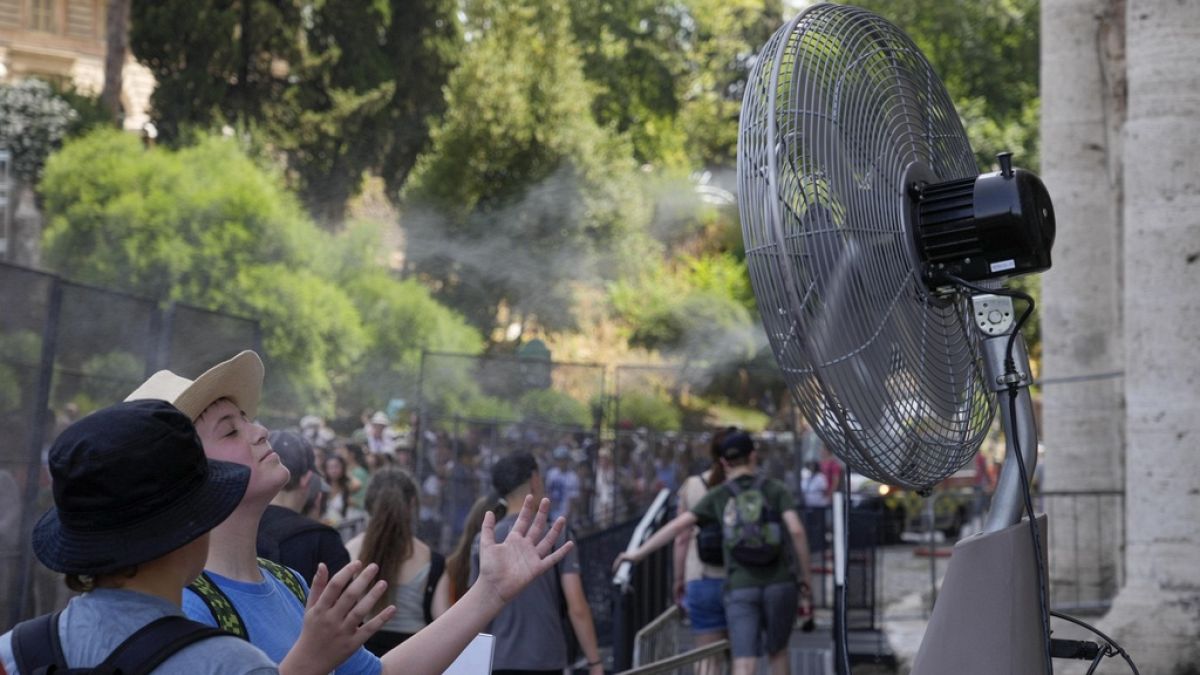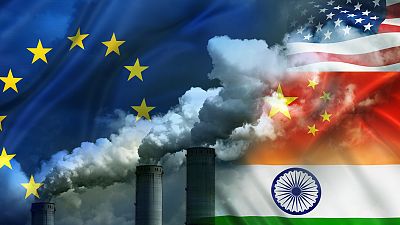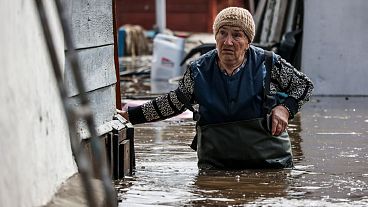Despite heat records being broken around the globe, misinformation about extreme weather is still circulating online.
Europe is facing a scorching heatwave this summer, especially in countries such as Spain, Greece and Italy.
In mid-July, Rome experienced its most sweltering weather on record: 42 degrees Celsius.
Yet, certain social media users have been trying to cast doubt that this record-breaking temperature has anything to do with climate change.
Was it hotter in Rome in 1841?
One viral Twitter post seen more than 3.5 million times as of July, claims it was "42°C in Rome in July 1841" way "before cars and planes" implying the heatwave is "unrelated to CO2" or human-made emissions.
Where did Twitter user Robin Monotti get this information? He links to an Italian Meteo Live blogpost, claiming it was recorded by the Meteorological station of Rome Collegio Romano.
However, studies on temperature records in Rome for the Meteorological station of Rome Collegio Romano do not go back beyond 1862.
And most importantly, temperature readings back then weren't very reliable according to experts.
“There's a lot of uncertainty surrounding that number that's been quoted for Rome in 1841," explains Paulo Ceppi, Professor of Climate Science at Imperial College London. "I'm not aware of that being an official record from the Italian weather services.
"And even if that value had been measured, it would be very hard to compare [it] with present-day measurements, because weather stations back then were much more basic. There were different instruments. Temperatures were not measured in standardised conditions.
"You would have to do a very careful analysis of the conditions under which that value was measured in order to compare it fairly with present-day values," he tells Euronews.
Are weather maps becoming more alarmist?
During record-breaking temperatures, weather maps have been accused of 'scaremongering' because of the bright colours used in the graphics.
A series of before-and-after images supposedly comparing years-old TV weather maps were shared on Twitter along with the claim that the maps, not the temperatures, were getting scarier over time.
"It’s 16°C and raining today during our official ‘summer’ yet this weather map shows the whole country as Yellow and Amber suggesting medium-risk weather. Scaremongering from the media is sickening," said one Twitter user based in France.
"Why are the UK media pushing a fearmongering climate change narrative so hard?" asked another user based in the UK.
We reached out to the UK’s Met Office and they told us the changes to its weather maps over the years have been to help people who are colourblind better interpret the data.
“The colour scale is in degree increments. [It] represents the same temperature in the same colour wherever it is in the world," explains Graham Madge, a climate spokesperson for the Met Office, via a written statement. "The scale has also been created with accessibility issues in mind, making it accessible for those with visual impairments, like colour blindness."
Is the heatwave related to climate change?
According to a newly published report by World Weather Attribution - an academic collaboration studying the causes of extreme weather - “Europe has experienced heatwaves increasingly frequently over the last years as a result of warming caused by human activities.
"Without human-induced climate change, these heat events would however have been extremely rare.”
They conclude July 2023 would have been virtually impossible to occur in Southern Europe if humans had not warmed the planet by burning fossil fuels.
"Heatwaves are driven by a combination of weather and the underlying long-term climate change trend which is caused by humans," explains Ceppi.
"So we've seen heatwaves before that would be occasional. We're seeing more of these heatwaves and when they do occur, they're more severe.
"We have calculated that the heatwave that would have occurred once in 50 years in the past climate, before the industrial revolution, is now occurring five times as often.
"And when that same heatwave does occur, it is also something like one degree Celsius warmer than it used to be. Heatwaves have always occurred but they're becoming more severe and more frequent."



